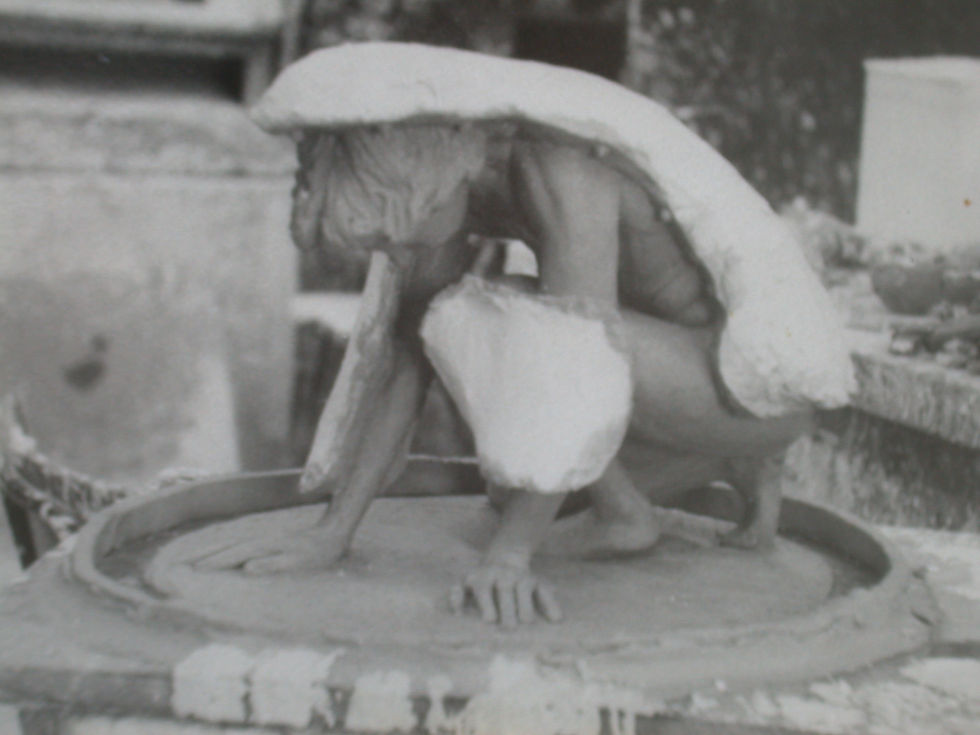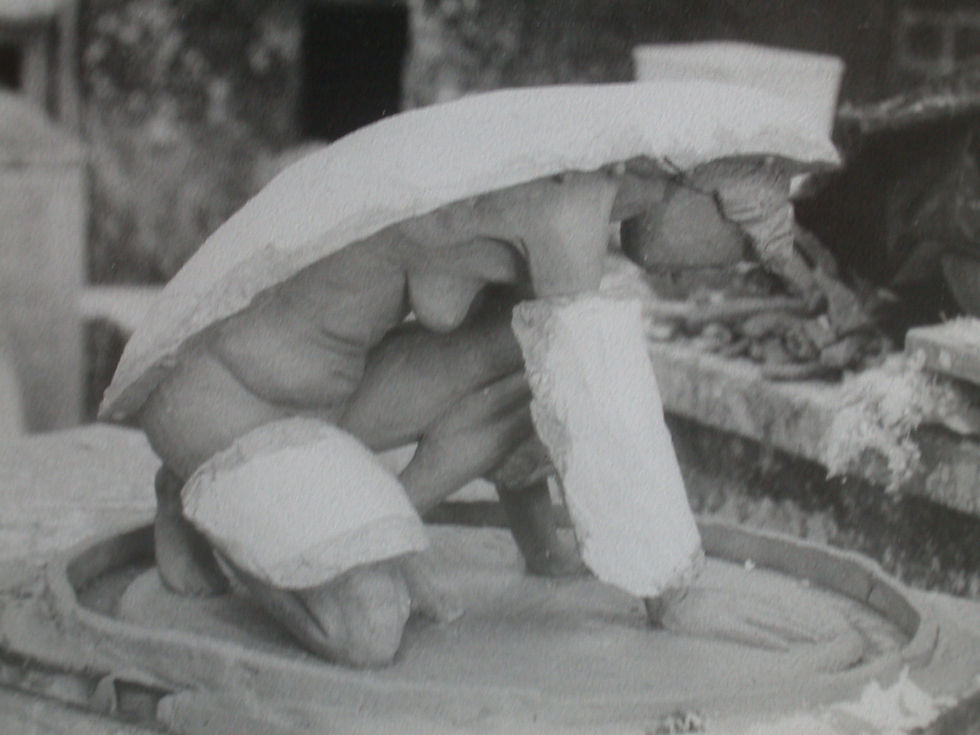
life modelling
Life modelling started as a life drawing, evening class I would attend, some years back, as a means of sharpening sense of observation. Being 3d minded I settled for life modelling classes; this could be, probably, the best exercise in 3d application used as 3d figure modelling exercises. Along with other like minded, artistically orientated people we would spend a chunk of our own time, after work, evenings and weekends, standing in front of and hovering around a model, translating our excellent 'sitters' pose into a figure in clay where, in our humble opinion, they would be immortalised into a life sculpture in half or third full size 3d figures, cast into plaster, cement-fondu, cold metal grp or else fired in a kiln. Most of our efforts were monitored and mentored by professional life sculpture tutors in established colleges and universities like London Guildhall previously London Met. We also rented furnished and furbished studio space at places like Mary Ward where we would carry on with our w.i.p. projects or else kick off new ventures with new sitters. The members in the group were mutually supportive and the results welcome, and individually/collectively acceptable.

in general, the group with whom i was working found one particularly interesting point about this sitter, namely the romanesque facial features of this mediterranean person. in this case, as only seldom happens, the sitter did not oblige with his last scheduled sitting and went awol. the group critically viewed each others' work and each artist still completed their respective work, in sitter's absentia, in spite of there not being one picture to go round; quite a collective effort.

'm' is cast in cold bronze. a plaster mould is built on the clay portrait in two halves, front/back. some technicians use brass shims for mould section separation; in this case a clay wall / wet newsprint masking is used. once one section is complete, key markers are hollowed on the plaster mould wall. that is now soft soaped and the next mould constructed. clay is emptied and the mould is carefully sponged and repeatedly soft soaped. the fine bronze powder is mixed with the gel coat and cast.

two halves of a whole - towards a holistic approach. the un-glazed, raku fired pieces are left to rough it out under extreme weather conditions. they get pushed around and they sometimes get damaged/cracked/repaired, and are brought together again. they face up to each other, two halves of a portrait but have different expressions: both accepting and challenging; their character changes daily. just for the pic, they swing and sway on an un-stable base. they carry an 'initial' by way of identity.

pottery is pinched into shape. no sitter is used. clay is pushed around to form a figure; this figure has a mind of its own, breasts protruding, becoming the focal point .. or else arms under breasts in an act of self flattery, legs apart and feet firmly planted on the deck with bottom starting to sag. the posture is a given quantity and is not meant to entertain an audience.

a seated torso figure modelled in wax using dental tools and warm water but also allowing heat from the fingers to control the surface, adding or removing texture. coats of heavily grogged ceramic are splashed onto the figure, allowing previous one to dry first. the full mould is suspended with binding wire inside an inverted suspended oil drum. wearing full p p e, gas torches are trained on the mould, firing the ceramic and releasing the wax. molten bronze is then poured in from a crucible.

'c' is a professional artists' model, excellent sitter. the sculpture is a third scale, required a three piece plaster mould using my usual wall / wet newsprint technique. cement fondu slurry of correct consistency is eased into the mould sections and fibre glass matting pushed into the fondu to reinforce it. once all the moulds are completed they are brought together and more slurry added. this is allowed to cure after which the mould is chipped off. this piece was taken away before polishing.

sometimes the sitters' name/s can be ephemeral and, unfortunately, impersonal as in this full size case and in the following two cases, too. here, life modelling is completed and as usual, clay is recycled. on this occasion a mould is not built. only picture of portrait survives. the uncanny side is that years later a woman with quite similar features enters the artist's life .. one real-life face, one portrait, one picture, one sitter .. not necessarily in that order!

usually, six, day-long life sessions sittings are needed. it is not unusual to utilise only some of the sitter's time and divide one's studio hours among different tasks as happens in this case. this helps one not to get too precious about one life modelling in particular. this 1:3 scale piece is tackled as a sketch relief while simultaneously finishing off other pieces in hand.

an armature is built, either together with a supporting structure or prepared earlier. both are needed as one single monolith, one to maintain the grey modelling clay in shape and the other to support the mass of the clay and maintain it in an erect posture. again, the 'sitter', an art student, maintained his twisted position throughout, professional, down to a tee.

this is another case where restraints of time and space take over. the larger the scale the more time consuming the task, the more clay is needed, the larger is the final volume of the finished work, the more plaster goes into the mould and more final casting material is needed. handling now becomes a case of team work. some of these constraints become hurdles within a college environment. hence, a sketch model is opted for.

clay figure's in the process of having five-piece plaster mould constructed around it. pics are taken by another student who kindly passed them on as a gesture, one artist to another. they seem like they reflect a journey of the sculpture, rather than just showing completed, finished sculpture itself. these pictures are more inclusive as they impact a larger audience. not least they are a memory of the student peer in question who is present along with these two pictures she now shares with moi.

highly professional model - 's'. great college student peer - 'c'

these clay models seem to have a transient, soft surface texture that transforms into permanence once cast. they seem to have a certain tactility that is only apparent visually. for this reason most of this series is presented here in this state rather than as the finished piece since there might always be more scope for involvement with the art work at this stage. in this case the work is w i p anyway.